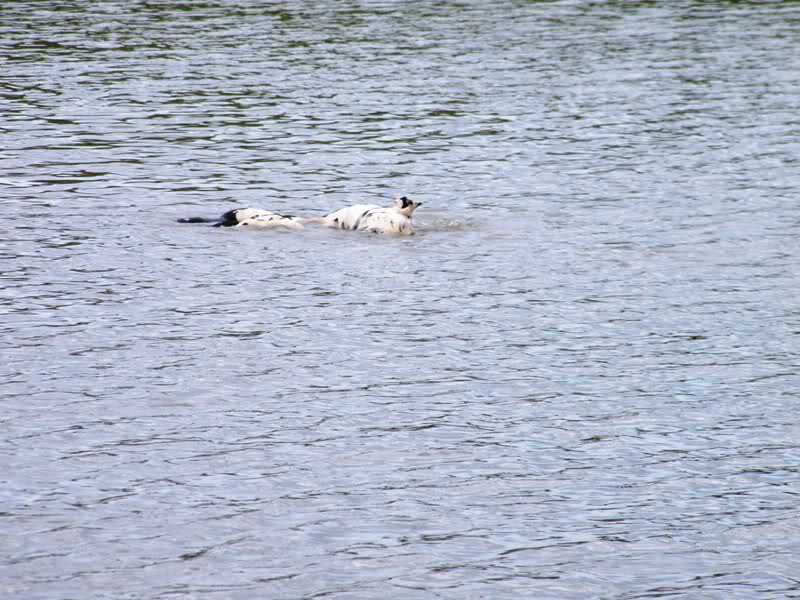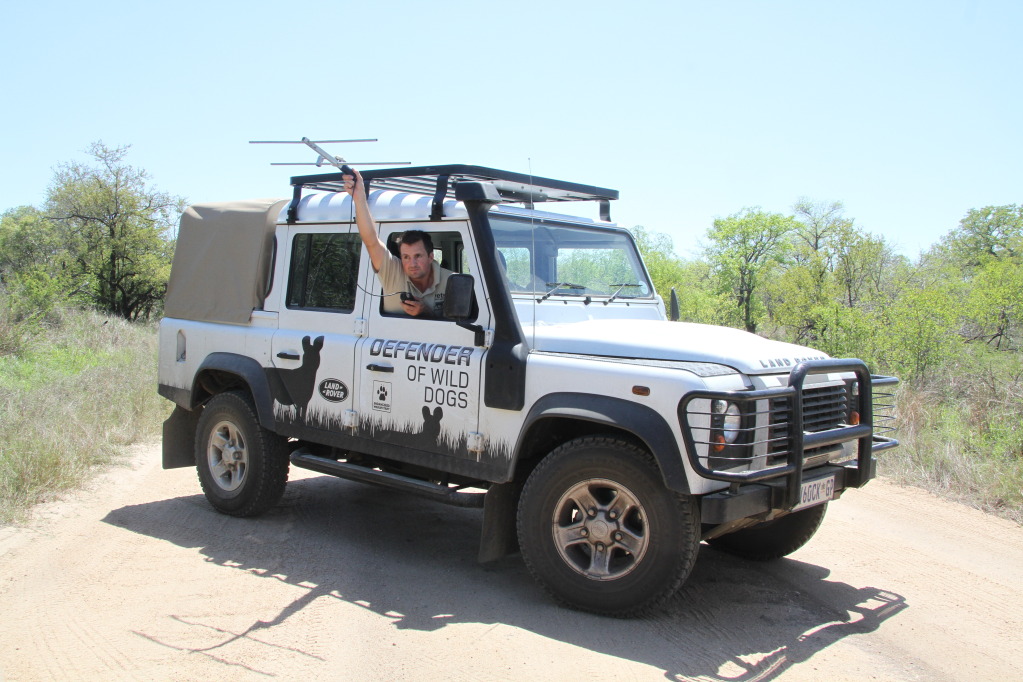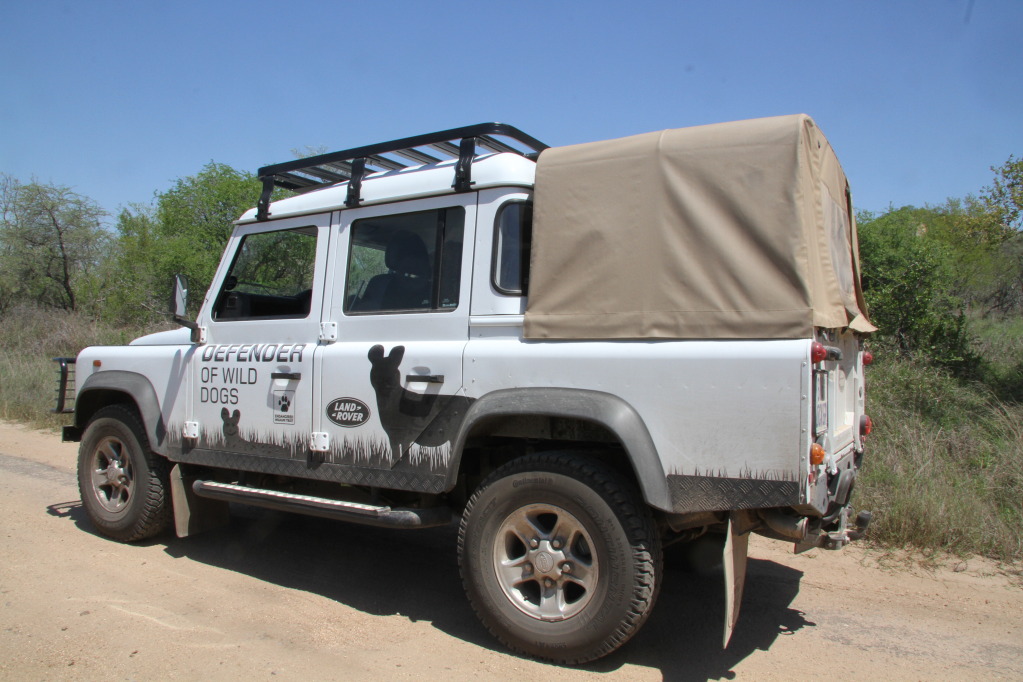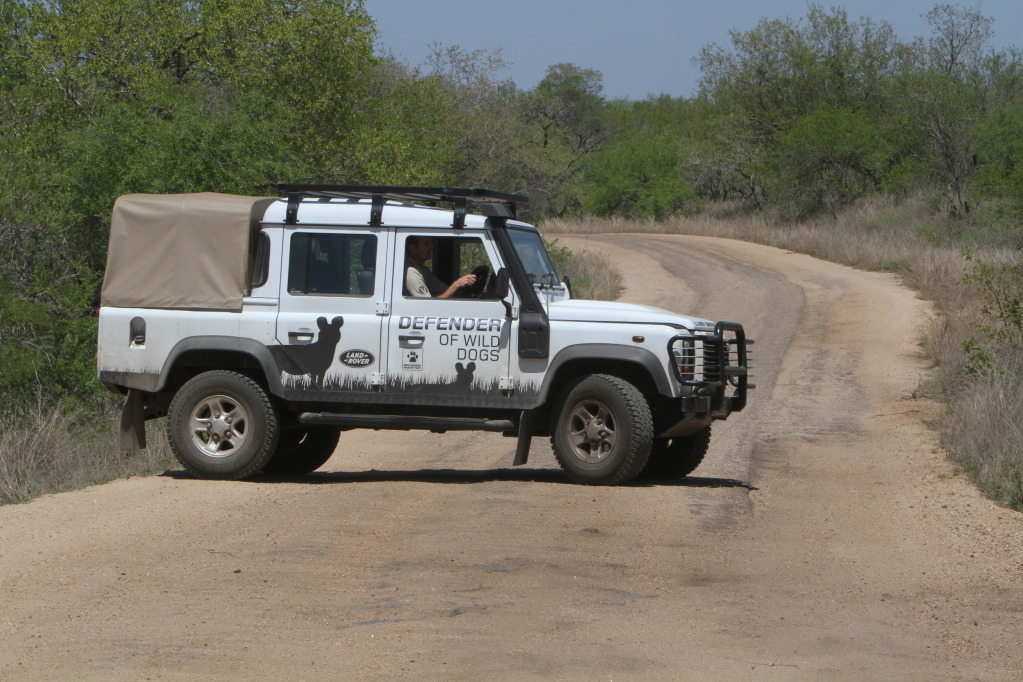https://www.sanbi.org/animal-of-the-wee ...
Jun 3, 2019
Official Common name: African Wild Dog, Cape Hunting Dog, Painted Hunting Dog
French: Cynhyene, Loup-peint, Lycaon
Spanish: Licaon
Often referred to as the Cape Hunting dog where Cape is insignificant as they have a wide distribution range in Africa South of the Sahara. The Latin name Lycaon pictus translates to “painted wolf-like animal” and therefore have been referred to as painted wolves and painted hunting dogs. Hunting dog is acceptable and describes the unique ecological role they play while painted describes the unique patterned makings of each individual.
Originally this species was described from a specimen located in Mozambique, which was under the name Hyaena picta, by Temminck in 1820. The name picta refers to painted in Latin and describes the varicoloured coat, which is blotched with patches of white, black and yellow.
The African Wild dog is one of Africa’s most endangered carnivores. This is due to the misunderstanding of their hunting techniques which led them to be considered wild animals that are believed to be harmful to crops, farm animals, or game, or which carry disease.
Description:
The African wild dog is distinctive amongst other medium-sized carnivores. Characteristic features include: large rounded ears, long legs, a bushy, broadly white tipped tail and a hairy coat with blotches of black, yellow and white. Like a humans fingerprint, across their distribution range each individual has a unique pattern. They can weigh up to 27 kgs with the male being much heavier than females.
The forehead and the area between the ears are mostly whitish or yellowish, with a distinct dark stipe beginning between the eyes and spreading across the top of the head. The muzzle is short and broad with a black or dark brown colouration and short hairs. The rounded ears are dark and usually have black fringes with obvious tufts of white hair growing from the lower inner edges in front. There are four digits on each foot with short, powerful claws. The fore paws are larger and broader than the hind paws.
Getting around:
African wild dogs have cursorial locomotion (limbs adapted for running), hence targeting weaker prey species when hunting. African Wild dogs are crepuscular when hunting (usually hunting in the early morning and early evening).Due to their instinctive cooperative behaviour individuals are able to cut corners and keep up with directional changes made by their prey during the chase, thus increasing hunting success
Communicating:
The dominant pair enforce their rank through ritual urination at the same place, while the rest of the pack members use faeces to communicate their location to other packs. The tail, as in domestic dogs, indicated the mood of an individual. In a relaxed position it usually hangs down, in social attraction it is curved over the hindquarters, for aggression it is held stiffly upward and to show submissiveness it is curved between the back legs.
Greeting ceremonies showed by adults is evolved from behaviour at young. Young begging for food, upon the return of the pack from hunting, includes: whining, face licking and pushing on the corner of the mouth. Facial expression is rarely shown. There are many different vocal callings, with the most common being the ‘hooo-hooo’ used to relocate pack members if they get scattered. This sound is thought to carry up to four kilometres.
Pre-hunting, during hunting, post hunting and feeding is expressed by a high-pitched, bird-like twittering. When surprised suddenly they bark and growl. Submissive behaviour also includes whining which comes from the squeaky whines when demanding for food when young. There has been records of a call that is used to get the young out from the den.
Distribution:
Historically, African wild dogs were once distributed throughout sub-Saharan Africa, utilizing many different habitats ranging from deserts to mountain summits but were thought to be absent from lowland rainforest and the driest deserts (IUCN). Currently there are local extirpations of from home ranges. Extracting historic records of the distribution in the Western Cape made it quite difficult as they were often misidentified with hyaenas.
The largest population of the species that still remains is in southern Africa (northern Botswana, western Zimbabwe, eastern Namibia, and western Zambia) and the southern part of East Africa (especially Tanzania and northern Mozambique)
Habitat:
Preferably African Wild dogs will utilize woodlands and broken woodland habitats. They can also be found in open plains as well as open savanna woodland. They tend to avoid Montane forests however utilize the adjacent montane grasslands. Records have shown that they may occur at altitudes of 1800 m in Zimbabwe.
Wild dogs utilize dens that are large in size. They usually take over abandoned aardvark or warthog holes after a bit of repairs and revamping. The dens are reused yearly if it is still available and undisturbed. This is seen in the return of a pack seasonally to the same den site despite being nomadic animals . This behaviour is associated to the memory of the alpha pair rather than the whole pack. There are many advantages to the den such as: protection of the pups for the first few months as well as protection to the female when giving birth (usually a pro longed time period due to large litter sizes). A major disadvantage of a den is the possibility of it getting flooded during the rainy season (when wild dogs give birth) and pups drowning.
Food:
Hunting usually takes place in the early morning to late morning and early evening to late evening. There have been records of them hunting in on full moon nights. They predominantly use the sense of sight when hunting, however those that are left behind utilizes the sense of smell to follow and keep up with the pack. African Wild Dogs have limbs adapted for running, however they usually target prey that is young/old, pregnant, sick or wounded.
In open spaces the pack will walk or gallop to a targeted potential prey species and will only break into a run once the prey flees. Once the run begins the pack leader (most of times) will single out an individual from the fleeing prey and pursue the hunt on that individual. Before or during the chase other members of the pack may break away to capture vulnerable prey opportunistically. This behaviour is seldom as once a chase is started they are usually focused on the fleeing prey.
Chasing of prey can continue for long periods of times and up to several kilometres. Records have shown maintained speeds of up to 66 kilometres per hour over a 2 kilometres distance. Not all hunts are successful. Hunting success together with the size of the prey and a possibility of several kills is dependent on the number of adult individuals in the pack. Evidence has shown that the more individuals in a pack a higher increase in hunting success (Increasing from 42 % with only 3 adults to 67% with 20 adults in a pack). In contrast there is also evidence indicating that one individual can capture prey as large as an adult female greater kudu, however this is a seldom phenomenon.
The body mass of the African Wild dog (17-36 kgs) exceeds the 21.5 kg threshold that defines an obligate carnivore feeding on large vertebrates. They do not depend on water but will drink when available
Their prey species is varied across their distributional range. Prey data collected from Hwange and Gonarezhou National Parks (located in Zimbabwe) showed that the predominant prey species were impala ( Aepyceros melamous, 38.7%), Greater kudu (Tragelaphus strepsiceros, 25.8%), waterbuck (Kobus ellipsiprymnus, 6.1%), common duiker (Sylvicarpa grimmia, 5.5 %), Sable (Hippotragus niger, 5.5 %) and Steenbok (Raphicerus campestris), Blue Wildebeest (Connochaetes taurinus), Bushbuck (Tragelaphus scriptus), and the African Buffalo (Syncerus caffer)-all comprising of 3.1%.In Kruger studies have found that the predominant prey species in Impala. In Moremi Game Reserve impala was also the most common preferred prey. In Namibia Reedbuck (Redunca arundinum) is most favoured. In East Africa the principal prey items are Thomsons’ gazelle, impala and wildebeest. There has been records of them taking smaller prey such as small mammals, reptiles and eggs. Within this range of species, Wild dogs usually hunt prey weighing between 10 and 120 kilograms
Relative to its body size the African wild dog consumes more meat per day than any other carnivore (1.2 – 5.9 kilograms per dog per day).
Sex and Life Cycles:
Sex: African Wild dogs breed seasonally, producing pups between the months of April and September (with a peak in late May). Compared to other members in the Canid family, the mating process is very quick (usually 5 minutes). The mating pair becomes vulnerable in this time due to the mating process occurring in open country (most of the times). The gestation period is 70 days (about 2 and a half months). They usually give birth to a litter of up to 21 pups (average 7-10 pups). The pups suckle for about 3 months, however begin weaning at about 14 days.
Family life: The African Wild dogs are highly social or gregarious, cooperative breeding predators with packs that may consist of a single dominant unrelated breeding pair , their offspring and non-breeding adults which are usually either offspring or siblings of one of the breeding pair and their main role in the pack is to assist in raising the pups. After the first few weeks of giving birth the mother is not needed for the upbringing on the young because members of the pack either bring back food or more often regurgitate it. This is the duty of members (usually sick or crippled members) that are responsible for the young while the others are out hunting. Newly formed packed consist of same-sex subgroups that have dispersed from their original group and join up with other unrelated same-sex subgroups. It is usually the females that leave the native group which thus prevents inbreeding. African Wild dogs is the only canid that has developed a pack system led by a monogamous pair.
THE BIG PICTURE:
Friends and Foes:
About 50% of kills are lost to kleptoparasitism (a form of feeding in which one animal takes prey that was caught or collected by another animal.) mainly by spotted hyenas (Crocuta crocuta) due to the fact that they have a very similar diet causing an overlap. Loss of food to kleptoparasitism has a significant impact on hunting time (spend 3.5 hours a day for hunting) and effort as well as energy costs. Behaviours such as being crepuscular and the rare cases of scavenging may have evolved to reduce interactions with their competitors (lions (Panthera leo), leopards (Panthera pardus) and spotted hyenas)
Smart strategies:
African wild dogs denning period is timed to coincide with the end of the breeding season of Impala’s. This is the period where Impala rams become vulnerable due to exhaustion from defence of territories and breeding stress. In the drier months there are increased concentrations of bovids around water courses which is ideal for the pups where they benefit from being well fed and therefore return to their nomadic lifestyles.
When hunting the wild dog will chase their prey to exhaustion and thereafter disembowel the species, which is thought to end a life faster than the more “humane” suffocation tactic. This also ensures avoidance with other predators that would potentially steal their kill.
They have a white tipped tail which is used for ‘Follow me signs’ in tall grass. The tail is raised to ensure the young are able to track their movements in the taller grass.
Poorer world without me:
The impact of Wild dogs have not been well documented and very little is known about the impact on the environment and nature if they were removed, however the removal or decline of any species from an ecosystem may cause functional problems. Wild dogs can act as an umbrella species as well as a flagship species in the field of conservation and can be beneficial through ecotourism. There is a negative stigma attached to Wild dogs due to their ‘inhumane’ way of killing prey. To mitigate conflict with human-Wild dog interaction and to ensure the survival of this species it is highly important to change the false perceptions of them by educating communities and farmers about their rarity.
People & I:
There is insignificant utilization of this species across its geographical range. In Zimbabwe there is evidence of small scale utilization of African Wild dogs. There have been report of trade in African Wild dog from both captive and those caught in the wild. The future impacts re being assessed currently. The hunting of Wild dogs was never a popular sport, although a few were shot for trophies in Tanzania until 1987 (when hunting was banned).Skinners did not really go for Wild dogs as they disliked handling the carcasses.
Conservation status and what the future holds
The African wild dog is currently listed as endangered on a global level according to the IUCN Red List. The main threats to African wild dogs include: pressure from anthropogenic activity and canine diseases. Another major threat that enhances the above mentioned pressures is habitat fragmentation, as this increases contact with humans as well as domesticated/feral dogs (Canis lupus familiaris). Most of their habitat is being replaced with crops and livestock grazing patches. Due to wild dogs killing livestock (rare), they have been shot, snared and poisoned in livestock areas. In 1998 a 10 year conservation plan was implemented for Wild dogs.
Inclusive of the plan was reintroducing wild dog packs into multiple small, geographically isolated conservation areas to establish management of a meta population and thereafter exchange amongst the packs. This periodic exchanges was intended to mimic natural dispersal as well as increase the viability of the meta population. They are currently still being introduced into their former historic range in conservation areas.
Relatives
African Wild dogs are the only members that belong in the genus Lycaon. The genus was separated out from the genus Canis (wolves and jackals) about the time this genus appeared 3-5 million years ago. Other members in the Family Canidae in southern Africa (the family to which African Wild dogs belong) are the: Bat-eared fox (Otocyon megalotis), Black-backed jackal (Canis mesomelas), Side-striped jackal (Canis adustus) and the Cape fox (Vulpes chama).
A carcass floating in Mpondo Dam






